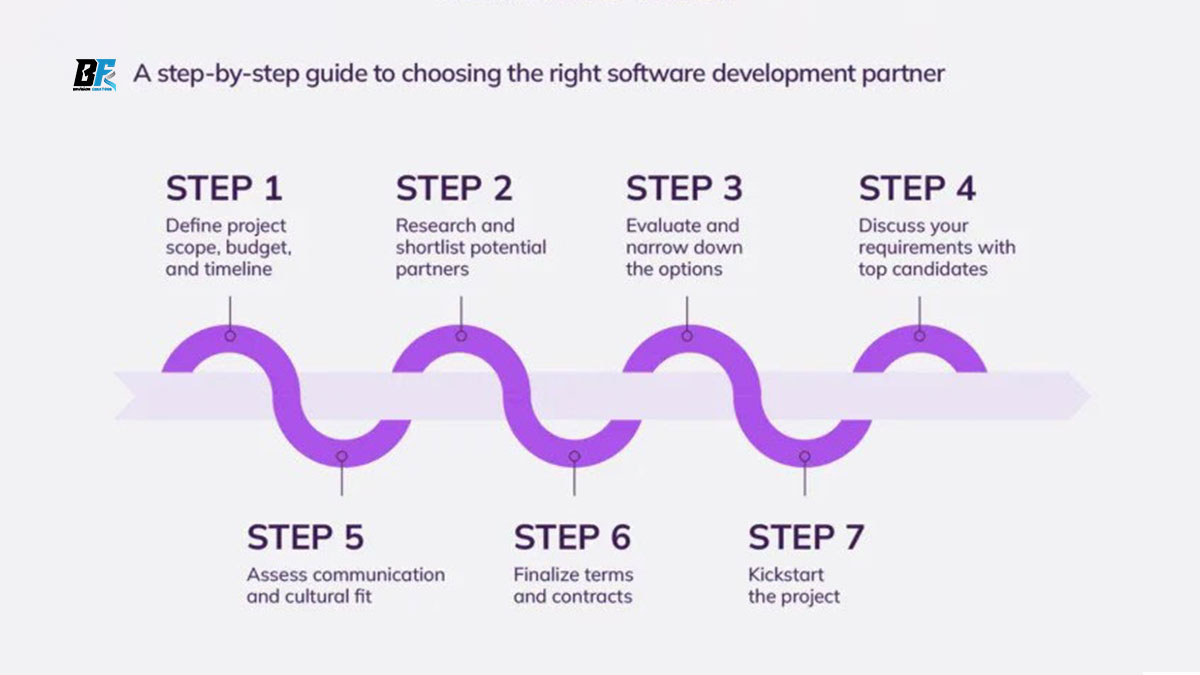Choosing the right development partner can make or break your project. A mismatched team can lead to delays, budget overruns, or even failure. Whether you’re building a web app, mobile platform, or custom software, this guide breaks down how to choose a development partner that aligns with your goals, budget, and vision.
Key Factors to Consider
1. Expertise & Experience
- Industry-Specific Knowledge: Do they have experience in your niche (e.g., healthcare, fintech, e-commerce)?
- Technical Skills: Check proficiency in required technologies (e.g., React, Python, AWS).
- Portfolio: Review case studies and past projects for quality and complexity.
2. Communication & Transparency
- Time Zone Alignment: Ensure overlapping hours for real-time collaboration.
- Language Proficiency: Avoid misunderstandings with fluent English or your preferred language.
- Tools Used: Slack, Jira, or Trello for seamless updates.
3. Development Methodologies
- Agile vs. Waterfall: Agile offers flexibility for evolving projects; Waterfall suits fixed-scope work.
- Scalability: Can they handle future upgrades or increased user loads?
4. Budget & Pricing Models
- Transparent Pricing: Fixed-price, hourly, or milestone-based contracts.
- Hidden Costs: Clarify fees for revisions, maintenance, or third-party integrations.
5. Post-Launch Support
- Maintenance Plans: Bug fixes, updates, and scalability support.
- SLAs (Service-Level Agreements): Guaranteed response times for issues.
Steps to Evaluate a Development Partner
Step 1: Define Your Requirements
- Outline project scope, timelines, and budget.
- List must-have technologies (e.g., Node.js, Flutter).
Step 2: Shortlist Candidates
- Source from platforms like Clutch, Upwork, or LinkedIn.
- Prioritize firms with 4.5+ ratings and verified reviews.
Step 3: Conduct Interviews
- Ask technical questions (e.g., “How would you optimize API latency?”).
- Assess problem-solving skills with scenario-based challenges.
Step 4: Check References
- Contact past clients to gauge reliability, communication, and quality.
- Ask: “Would you work with them again?”
Step 5: Start with a Pilot Project
- Test collaboration with a small task (e.g., MVP or feature development).
- Evaluate adherence to deadlines and quality standards.
Red Flags to Avoid
🚩 Vague Proposals: Lack of clear timelines or deliverables.
🚩 No Portfolio: Refusal to share past work or client testimonials.
🚩 Poor Communication: Delayed responses or unclear answers.
🚩 Overpromising: Guarantees of “100% success” or unrealistic timelines.
Comparison: Types of Development Partners
| Partner Type | Pros | Cons | Best For |
|---|---|---|---|
| Freelancers | Low cost, flexible | Limited scalability | Small, short-term projects |
| Boutique Agencies | Specialized expertise | Higher costs | Niche tech needs |
| Enterprise Firms | Extensive resources | Bureaucratic processes | Large-scale projects |
Checklist for Choosing a Partner
✅ Verified portfolio with industry-relevant projects.
✅ Clear communication channels and tools.
✅ Transparent pricing and contract terms.
✅ Positive client references and reviews.
✅ Post-launch support and maintenance plans.
Top Questions to Ask
- “Can you provide examples of similar projects you’ve delivered?”
- “How do you handle scope changes or unexpected challenges?”
- “What’s your process for ensuring code quality and security?”
- “Do you offer post-launch maintenance?”
Why Cultural Fit Matters
A partner who aligns with your company’s values and work ethic ensures smoother collaboration. For example:
- Startups may prefer agile, fast-paced teams.
- Enterprises might prioritize compliance and structured workflows.
Future-Proofing Your Partnership
- Scalability: Ensure they can handle growth (e.g., cloud architecture expertise).
- Innovation: Partners who adopt emerging tech (AI, blockchain) stay ahead.
- Long-Term Vision: Align on roadmaps for future updates or integrations.
Final Tips
- Trust Your Gut: If something feels off, explore other options.
- Document Everything: Use contracts to outline deliverables, IP rights, and timelines.
- Start Small: Pilot projects reduce risk before full commitment.


